Boom or bust
A Baltimore nonprofit tackles plastic pollution on the Back River
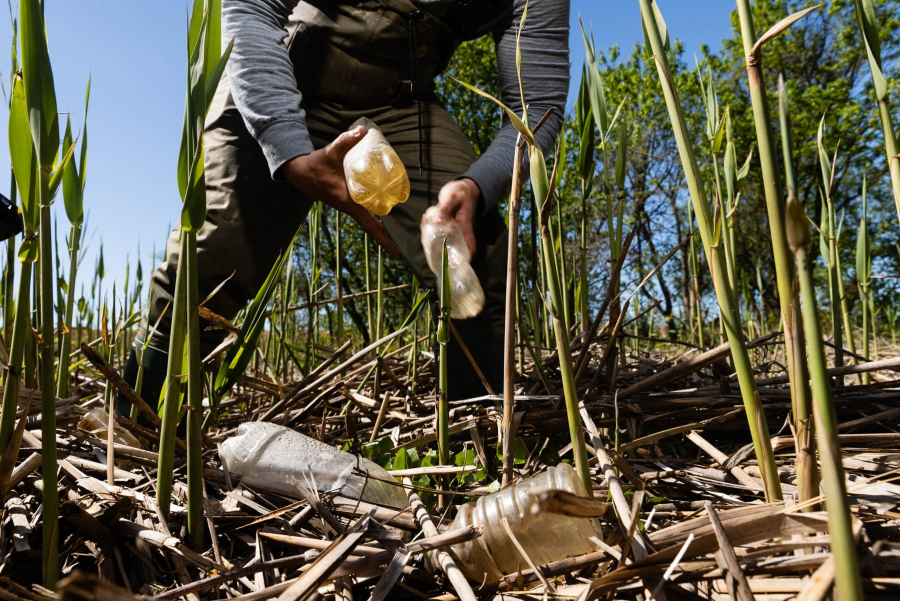
Looking at the headwaters of Back River on a Monday morning, Earth Day 2024, you’d think that the tributary's litter problem had been all but resolved.
Two floating trash booms line the sides of the river, acting as guardrails that typically guide all sorts of litter and wooded debris toward a clearing on the banks. Here, members of the Back River Restoration Committee (BRRC) Boom Team show up Monday through Friday to haul it in.
“Usually this is full of trash,” says Austin Lewis, a local business owner and member of the boom team. “It’s not that it’s cleaner, [the trash] just hasn’t made it in yet.”
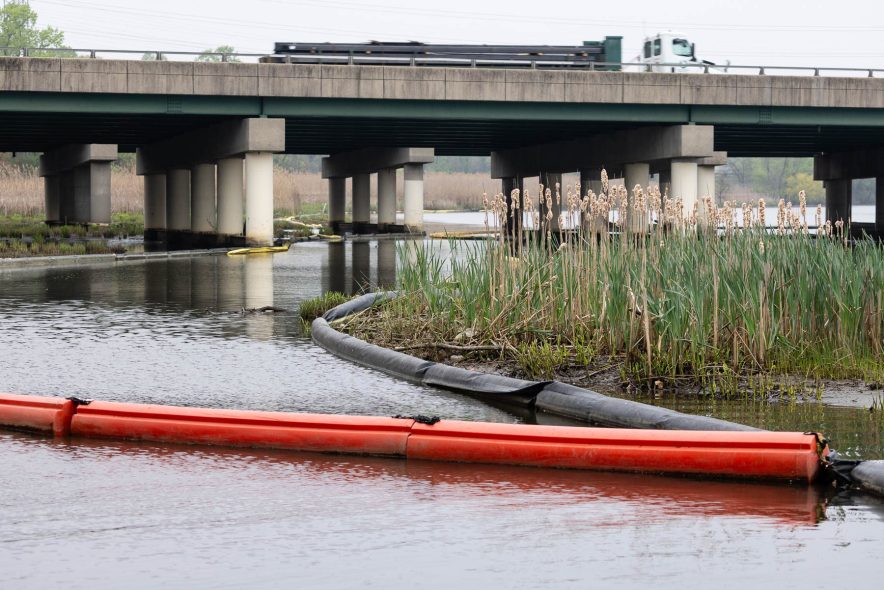
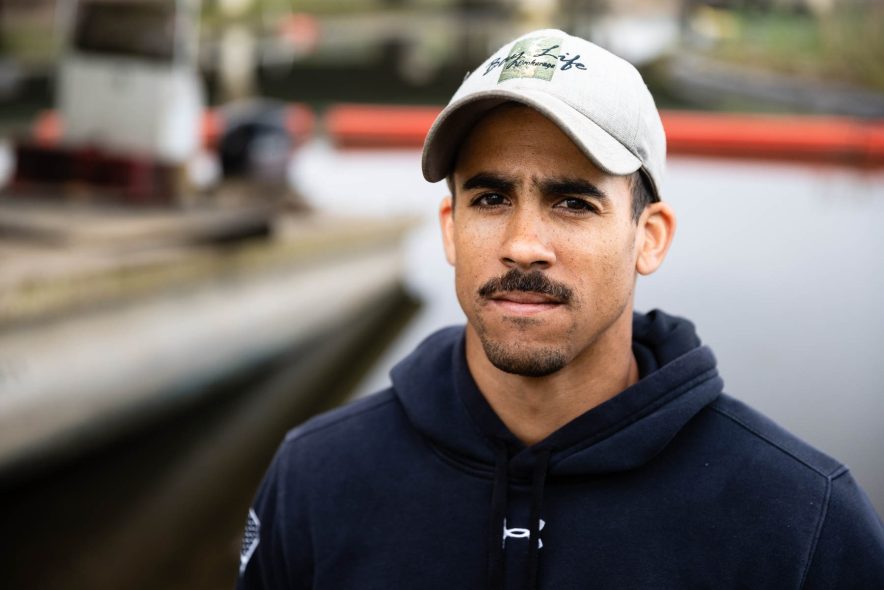
Lewis is joined by Dylan Schilpp, who is filling in for his grandfather, Paul Schilpp, a 72-year-old that’s been helping run the trash boom for as long anyone can remember. “I’m shocked that it’s this clean,” says Schilpp.
On days when Mother Nature brings trash into the boom, the two-person team will spend the morning picking it up and hauling it into the dumpster. This requires the crew to wade into the water, using large rakes to drag out the trash and wooded debris collecting along the booms or at the base of the bridge.
The boom team is known to get creative, opening up the boom and guiding the trash themselves or using the motor of their boat to propel the trash in the right direction.
“It’s like Tetris,” says Lewis, who seems to revel in the problem solving aspect of the job.
But on days like today, when the litter isn’t between the booms, the team has to get a little proactive. “If the trash isn't here, we'll go find it,” says Lewis. “We’ll go up river.”
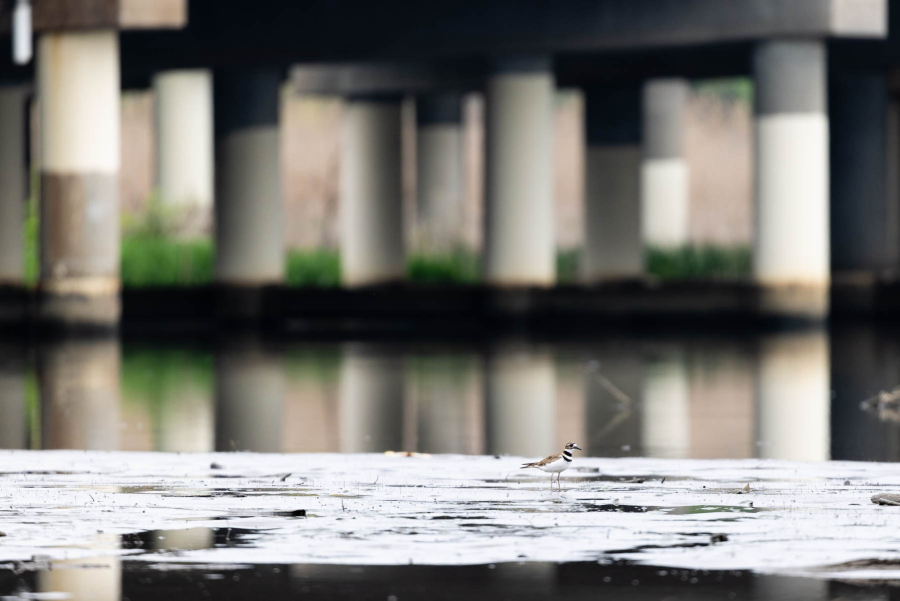
The reality for the Back River—which is a common issue across almost all the rivers and streams of the Chesapeake Bay watershed—is that there is always a steady stream of plastics and trash flowing through the water. Back River’s watershed spans 39,075 acres and is fed by Herring Run, which flows through Baltimore City and County. Overflowing trash cans, polluted streets and illegal dumping account for much of the debris that makes its way into the Back River.
Since installing the trash boom in 2011, BRRC has hauled in over six million pounds of litter and debris. According to Desiree Greaver, the nonprofit’s project manager, 2024 is set to be a record breaking year, surpassing the roughly 431.71 tons of debris from May 2015 to June 2016.
Included in that debris tends to be a lot of large logs and sticks that the team removes to make the river safe for boaters. Tires, pieces of furniture, electronics and other types of trash are also mixed up in the wooded debris, and separating the two would make the job far more difficult.
But the main culprit tends to be plastics, which, unlike other forms of trash, don’t degrade, staying in the water for thousands of years.
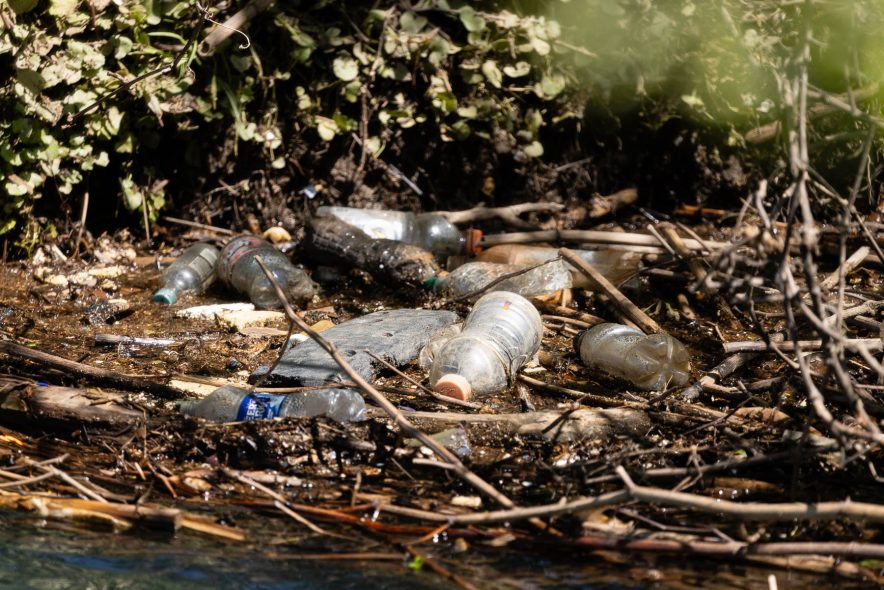
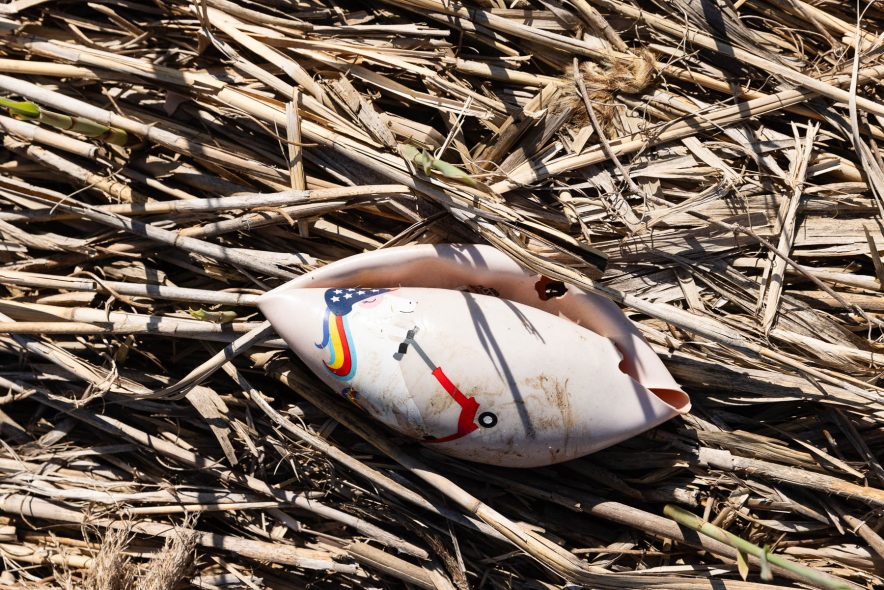
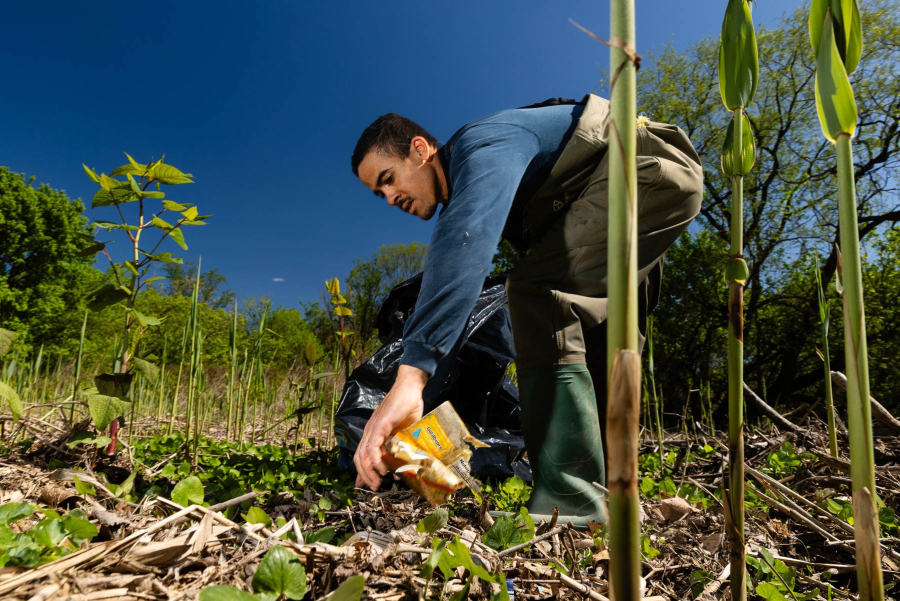
“It's a lot of plastic bags, caps, bottles, straws and lighters,” says Lewis. What’s worse, Lewis says that these plastic materials often show up in smaller pieces that are even more challenging to remove. “Broken bottles, broken bottle caps, plastic wrappers,” he adds.
Plastic pollution is a problem not just in the Back River but across the globe, with estimates that there will be more plastic in the ocean than fish by 2050. But here in the Chesapeake Bay, the larger threat is what plastics break down into.
When plastic materials enter the water, waves and the sun break them down into microplastics. These tiny particles come from household products as well, shedding from synthetic materials like spandex and certain kitchen tools. While the Bay’s trash regularly flows into the ocean, an estimated 94% of microplastics stay in the estuary, collecting near shorelines and underwater grass beds. In 2020, researchers took 30 water samples from Maryland's portion of the Chesapeake Bay and found microplastics in every one.
Microplastics are consumed by smaller organisms and travel up the food chain, likely impacting their ability to survive. At Horn Point Laboratory in Cambridge, Maryland, oysters were found to be overstressed when consuming significant amounts of microplastics. Another study found that in the ocean, perch born into an environment rich in microplastics had reduced rates of hatching and development to maturity.
Researchers at the Chesapeake Biological Laboratory are studying the biological effects that consuming microplastics has on striped bass. In the lab, scientists will inject mysid shrimp with microplastics, then feed them to striped bass to monitor the impact on the fish. Kelly Somers, a researcher involved, said that one possible impact could be a reduction in the fish’s fitness, basically making them a slow swimmer, which increases their chance of getting eaten.
Even the Bay’s most iconic and economically significant critter—the blue crab—could be threatened. Blue crabs release their larvae, known as zoea, near the mouth of the Bay. From there, zoea travel out to the ocean where they potentially encounter loads of microplastics during an important period of growth. Scientists are still studying the degree to which this impacts blue crab larvae, though it’s almost a guarantee that that larvae are consuming microplastics.
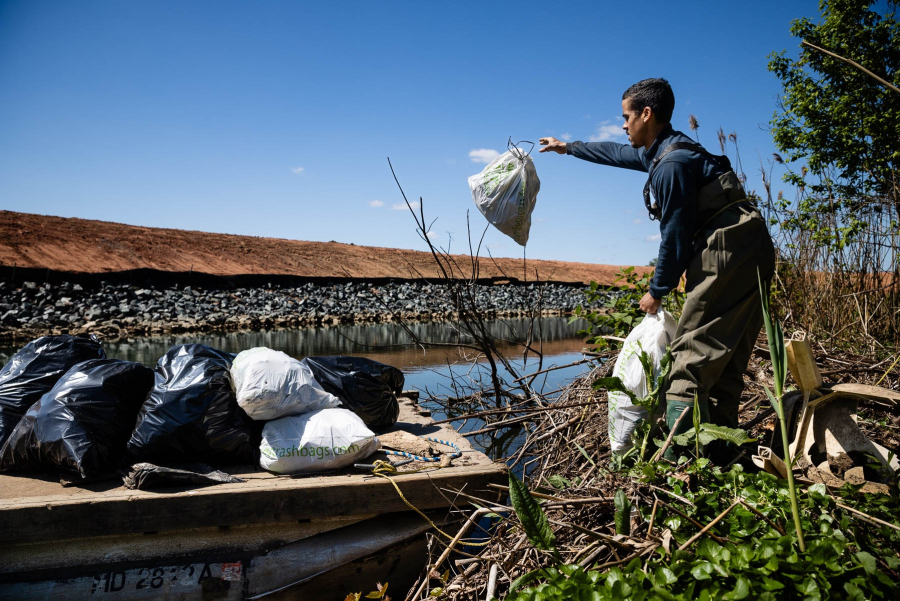
Back on the Back River, the boom team takes a small barge into the quiet tributaries toward a spot that they know will have trash on it. During the ride, they point out other problem areas, like the little slices of land filled with tall grass and reeds that are too dense to pick up. “Those areas are filled with trash,” says Lewis.
When the team gets to their destination, a clearing on the side of the river where vegetation has yet to grow in, the tributary’s litter problem begins to reveal itself.
While you couldn’t tell from the water, once we are on land there is pretty much nowhere you can look without seeing a plastic bottle. For a good two hours, the team picks up the trash by hand, passing the time with small talk and a bit of country music coming from a phone inside Lewis’ waders. By the end, the team fills up over 10 large trash bags—some exclusively filled with plastic bottles—as well as a broken chair and sofa cushion.
“The stuff you find…it’s just odd,” says Lewis.
The amount of trash that the team has hauled in is both inspiring and alarming. On the one hand, it’s a couple dozen pounds of plastics that aren’t floating around in the river, drifting by people’s houses and leaching into the ecosystem. But according to Lewis and Schilpp, the area they cleared will be filled with plastics again after the next rain storm.
“We’ve gotta get off plastics at some point,” adds Lewis. “Because the trash will never stop.”
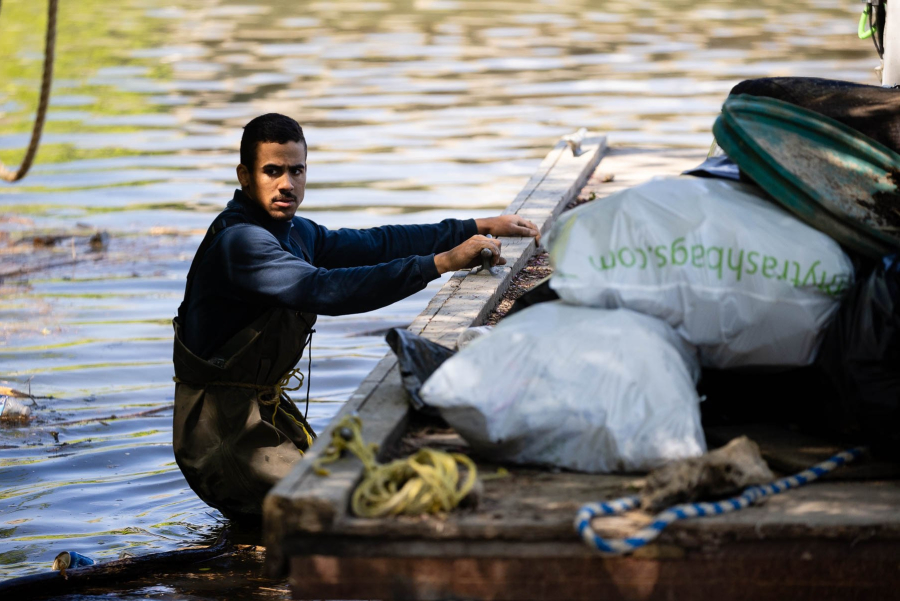

Comments
We live on the other side of the boom. And a friend of ours can to get his
Boat out because of a double boom..so we are excluded from boating activities
Thank you!
Your comment has been received. Before it can be published, the comment will be reviewed by our team to ensure it adheres with our rules of engagement.
Back to recent stories